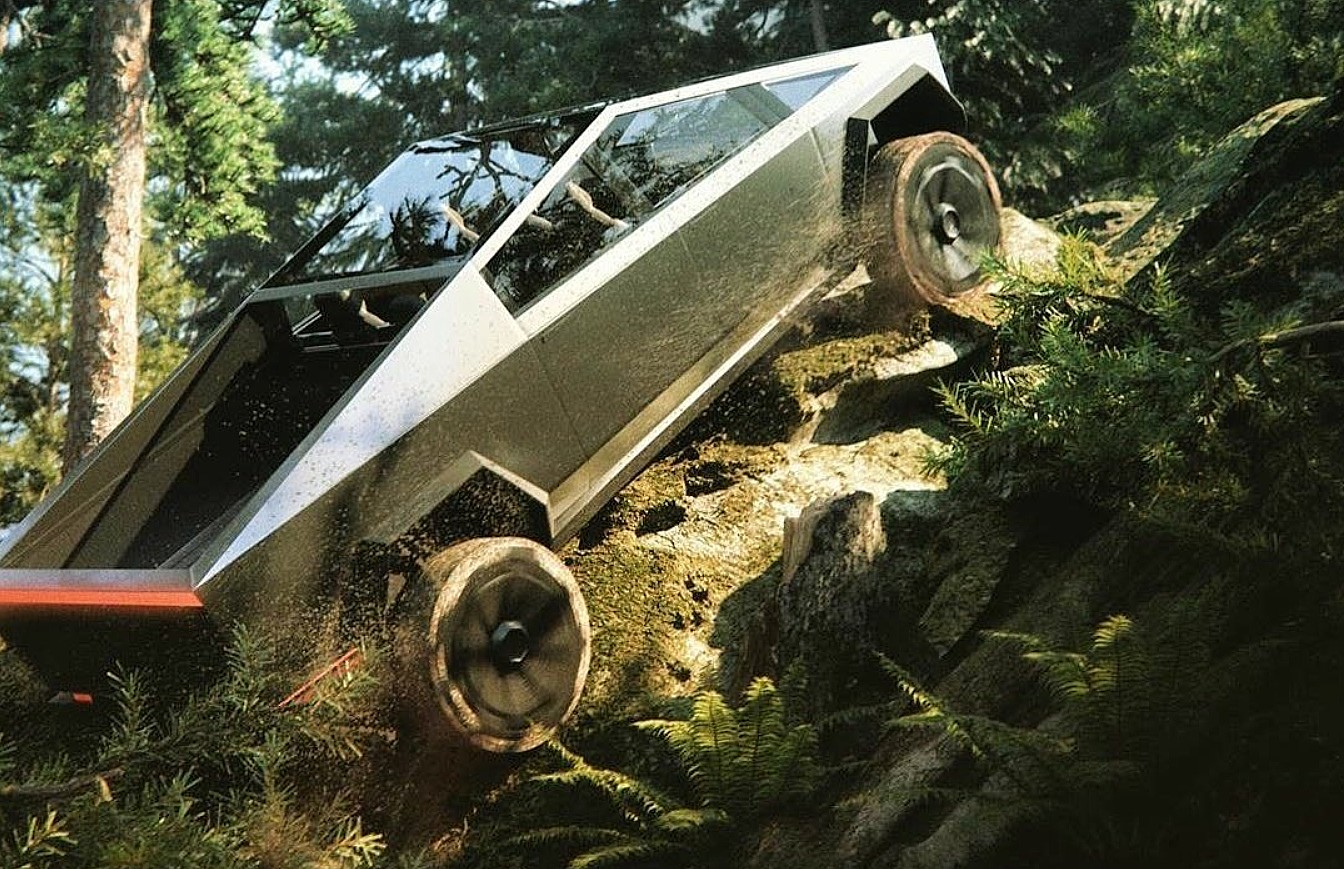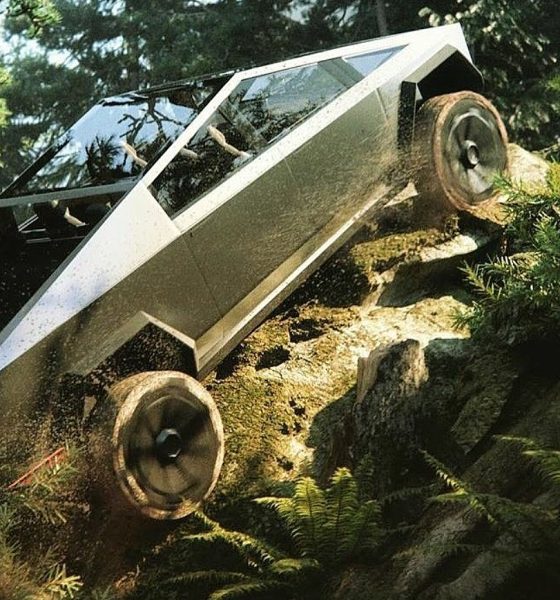

Lifestyle
The Tesla Dilemma: Texas or Tulsa
When news broke that Tesla had announced the finalists for its next Gigafactory, which actually could be called a Terafactory based on the expected cell production output from the facility, comparisons between Austin, Texas, and Tulsa, Oklahoma was rampant across social media. Each location has its own distinct advantage and disadvantage, which I’ll explore.
I will start with Austin, Texas, because of the location’s notoriety as the “favorite” of the two locations. Also, it is fairly evident that Elon seems to think highly of the Lone Star State based on his Tweets about the state and also the presence of his SpaceX business there.
Texas has a lot of available lands, and it’s very cheap. Houses and businesses can get the same amount of land in Texas that they can in California, but at a significantly cheaper price. Tesla could save a lot of money on the purchase price of the land and it could be using Tulsa as leverage to get an even better deal on the Texas property.
—————————————————–
This is a preview from our weekly newsletter. Each week I go ‘Beyond the News’ and handcraft a special edition that includes my thoughts on the biggest stories, why it matters, and how it could impact the future.
A big thanks to our long-time supporters and new subscribers! Thank you.
—————————————————–
One of my favorite reasons for a Texas Factory is the fact that the state has long been the heart of oil and gas, and the world’s largest electric automaker in the same region. I find that to hysterical to me. I feel that Tesla establishing its largest and most dominant production facility in that area would be a big “middle finger” to the pollution-causing gas and oil drillers who, for a long time, have called Texas home.
Texas also has a hearty history of automotive manufacturing and is ranked fourth out of all fifty U.S. states in the sector. Also, Tesla could provide a stable economic boost to the State. While this also applies to Tulsa, Texas already has a strong presence in automotive manufacturing, which could ease regulations and transition time in the state.
Texas is also home to SpaceX’s Boca Chica Launch Facility. This statement solidifies Musk’s presence in the state and makes it an already familiar option for the CEO’s other company.
However, Tulsa has its own array of advantages, a lot of which are similar to Texas but in a slightly different way.
Tulsa also offers a sizeable amount of affordable land that Tesla could use for its next production facility. Although the company has roots in Texas and not in Tulsa, local authorities are ready to make a strong push for Tesla, knowing that the electric automaker could provide a substantial positive economic injection into the state’s employment rate.
Tulsa is also slightly more centralized than Austin, as it is closer to the geographical center of the country. While it may not provide much of an advantage as far as location goes, it is slightly more centralized than Austin is.
I also feel like Tulsa may want the factory a little bit more than Austin. I could be wrong here, because what city wouldn’t want a manufacturing plant that will provide 12,000+ with jobs and provide a positive economic impact? But Tulsa took a statue of an oil driller and put Tesla’s logo on it, and I feel like that is pretty special in itself considering the city’s rich roots in oil drilling. It is especially impressive that the local figures in Tulsa are willing to sit there and modify a very notable statue in the area to woo Tesla in their direction.
—————————————————–
If you made it this far, thank you :), and please consider Subscribing and joining me next week as I go ‘Beyond the News’
—————————————————-
Simply enough, it’s pretty obvious that Texas is the favored choice. At least it is for me. While Tulsa does have its advantages, it just doesn’t seem like it would provide enough benefits that make it a clear favorite over Texas. Elon has also mentioned Texas on numerous occasions like I previously mentioned, and really, economically, I think it provides more benefits to Tesla as a company.
What do you think?
I’d also like to add that there were plenty of great emails last week that I received after sending out the Fremont piece. Thanks for being sure to send me messages. I really appreciate the feedback and I love the fact that whether you agree or disagree, you’re telling me your thoughts. Thanks again!

Lifestyle
Tesla Model S Plaid battles China’s 1500 hp monster Nurburgring monster, with surprising results
There is just something about Tesla’s tuning and refinement that makes raw specs seem not as game-changing.

The Tesla Model S Plaid has been around for some time. Today, it is no longer the world’s quickest four-door electric sedan, nor is it the most powerful. As per a recent video from motoring YouTube channel Carwow, however, it seems like the Model S Plaid is still more than a match for some of its newer and more powerful rivals.
The monster from China
The Xiaomi SU7 Ultra is nothing short of a monster. Just like the Model S Plaid, it features three motors. It also has 1,548 hp and 1,770 Nm of torque. It’s All Wheel Drive and weighs a hefty 2,360 kg. The vehicle, which costs just about the equivalent of £55,000, has been recorded setting an insane 7:04.957 at the Nurburgring, surpassing the previous record held by the Porsche Taycan Turbo GT.
For all intents and purposes, the Model S Plaid looked outgunned in Carwow’s test. The Model S Plaid is no slouch with its three motors that produce 1,020 hp and 1,420 Nm of torque. It’s also a bit lighter at 2,190 kg despite its larger size. However, as the Carwow host pointed out, the Model S Plaid holds a 7:25.231 record in the Nurburgring. Compared to the Xiaomi SU7 Ultra’s record, the Model S Plaid’s lap time is notably slower.
Real-world tests
As could be seen in Carwow’s drag races, however, Tesla’s tech wizardry with the Model S Plaid is still hard to beat. The two vehicles competed in nine races, and the older Model S Plaid actually beat its newer, more powerful counterpart from China several times. At one point in the race, the Xiaomi SU7 Ultra hit its power limit due to its battery’s temperature, but the Model S Plaid was still going strong.
The Model S Plaid was first teased five years ago, in September 2020 during Tesla’s Battery Day. Since then, cars like the Lucid Air Sapphire and the Xiaomi SU7 Ultra have been released, surpassing its specs. But just like the Model Y ended up being the better all-rounder compared to the BYD Sealion 7 and the MG IM6, there is just something about Tesla’s tuning and refinement that makes raw specs seem not as game-changing.
Check out Carwow’s Model S Plaid vs Xiaomi SU7 drag race video below.
Lifestyle
500-mile test proves why Tesla Model Y still humiliates rivals in Europe
On paper, the BYD Sealion 7 and MG IM6 promised standout capabilities against the Model Y.

BYD is seeing a lot of momentum in Europe, so much so that mainstream media has taken every opportunity to argue that the Chinese automaker has beaten Tesla in the region. But while BYD sales this year in Europe are rising and Tesla’s registrations remain challenged, the raw capabilities of vehicles like the Model Y are difficult to deny.
This was highlighted in a 500-mile challenge by What Car? magazine, which showed that the new Tesla Model Y is more efficient, cheaper to run, and more reliable than rivals like the BYD Sealion 7, and even the nearly 400 KW-charging MG IM6.
Range and charging promises
On paper, the BYD Sealion 7 and MG IM6 promised standout capabilities against the Model Y. The Sealion 7 had more estimated range and the IM6 promised significantly faster charging. When faced with real-world conditions, however, it was still the Model Y that proved superior.
During the 500-mile test, the BYD nearly failed to reach a charging stop, arriving with less range than its display projected, as noted in a CarUp report. MG fared better, but its charging speeds never reached its promised nearly-400 kW charging speed. Tesla’s Model Y, by comparison, managed energy calculations precisely and arrived at each stop without issue.
Tesla leads in areas that matter
Charging times from 25% to 80% showed that the MG was the fastest at 17 minutes, while Tesla and BYD were close at 28 and 29 minutes, respectively. Overall efficiency and cost told a different story, however. The Model Y consumed 19.4 kWh per 100 km, compared to 22.2 for MG and 23.9 for BYD. Over the full trip, Tesla’s charging costs totaled just £82 thanks to its supercharger network, far below BYD’s £130 and MG’s £119.
What Car? Magazine’s testers concluded that despite BYD’s rapid sales growth and the MG IM6’s seriously impressive charging speeds, Tesla remains the more compelling real-world choice. The Model Y just offers stability, efficiency, and a proven charging infrastructure through its Supercharging network. And as per the magazine’s hosts, the Model Y is even the cheapest car to own among the three that were tested.
Watch What Car? Magazine’s 500-mile test in the video below.
Lifestyle
Tesla Cybertruck slapped with world’s least intimidating ticket, and it’s pure cringe
One cannot help but cringe and feel second-hand embarrassment at the idea of a person just driving around with a stack of these babies.

A Cybertruck parked at Stanford Shopping Center in California was recently hit with what might be the most try-hard piece of paper ever slipped under a wiper blade: a “fake citation” accusing the driver of supporting a “fascist car.”
The note, shared on X by Tesla staff program manager Ryan Torres, quickly made the rounds on X, where it quickly gained attention as an example of how not to protest.
The world’s least intimidating ticket
According to the citation, the supposed “violation” was “driving a fascist car.” The remedial action? Take the bus, call an Uber, or ride a bike. The note also dubbed Elon Musk a “chainsaw-wielding Nazi billionaire.” Now, protests against Tesla and Elon Musk have become commonplace this year, but one cannot help but cringe and feel second-hand embarrassment at the idea of a person just driving around with a stack of fake anti-Tesla/Musk citations.
Torres pointed out the irony himself in his post on X. Tesla currently employs over 140,000 Americans, and SpaceX has put the U.S. firmly back at the top of space technology. As Torres put it, maybe the person behind the world’s least intimidating ticket should “read a book on innovation before vandalizing” other people’s property.
Peak performative clownery
Not to mention that the fake ticket’s logic collapses under its own weight. EVs like the Cybertruck are literally designed to reduce emissions, not “destroy the economy.” If anything, Tesla has bolstered the United States’ economy by fueling jobs in engineering, manufacturing, and clean energy. It’s not the first time a Tesla has been the target of vandalism or politically charged notes, but this one stands out for sheer cringe value.
Torres summed it up neatly: “Peak clownery.” On that point, at least, the citation earns full marks. In a way, though, perhaps cringe fake tickets are not as bad as the literal firebombs that were being thrown at Tesla stores and cars earlier this year because some critics were gleefully misinformed about Elon Musk.








